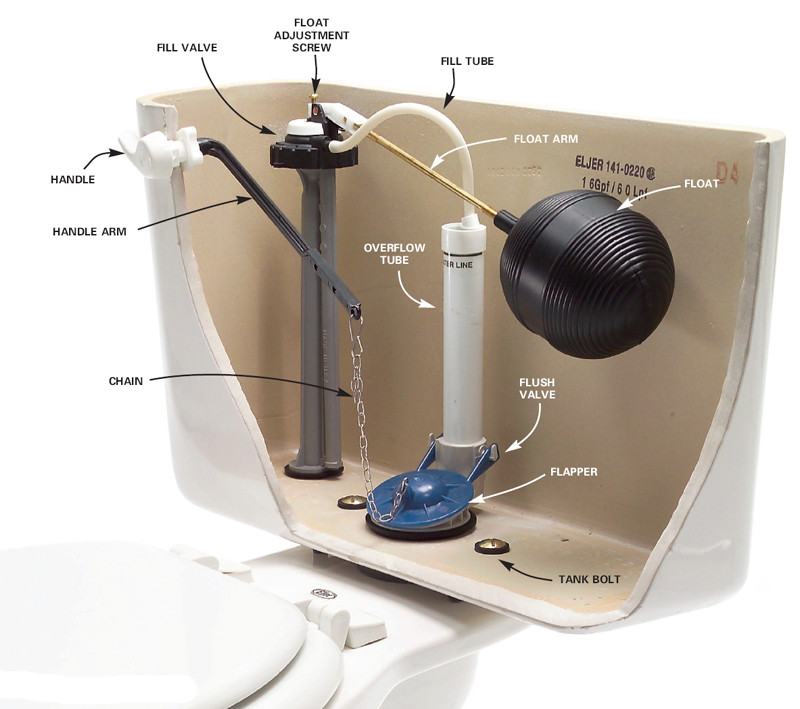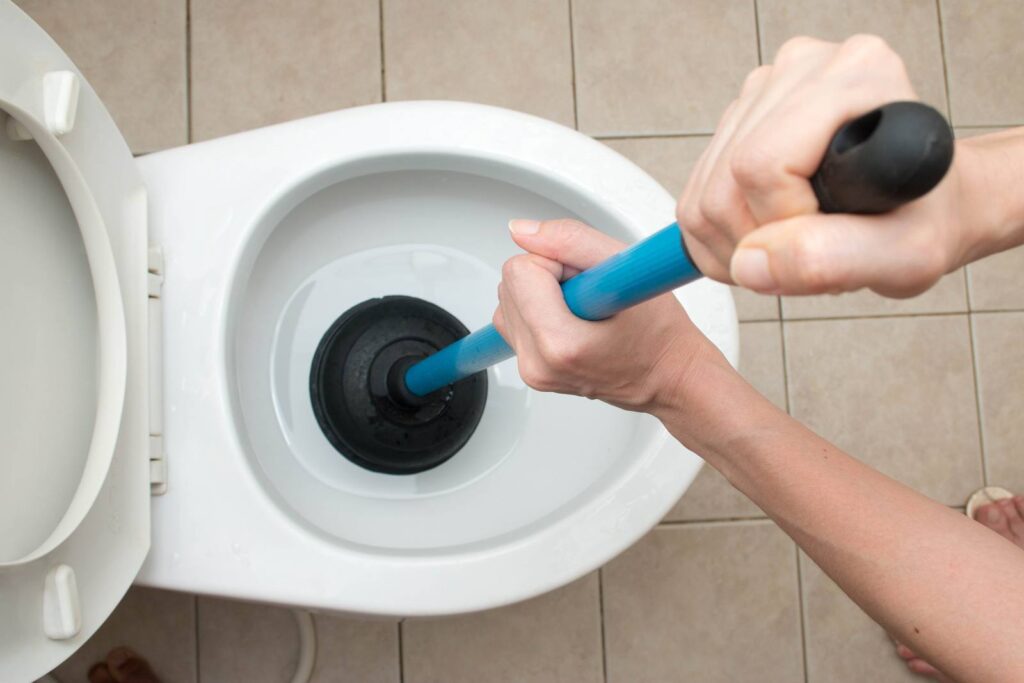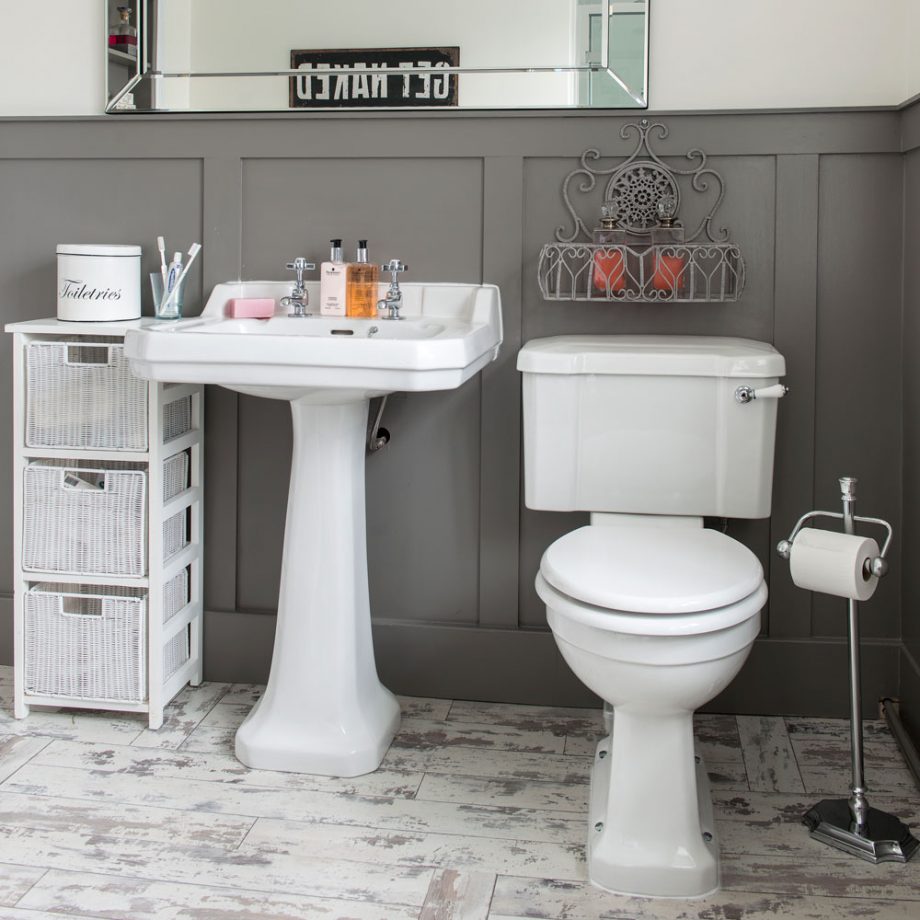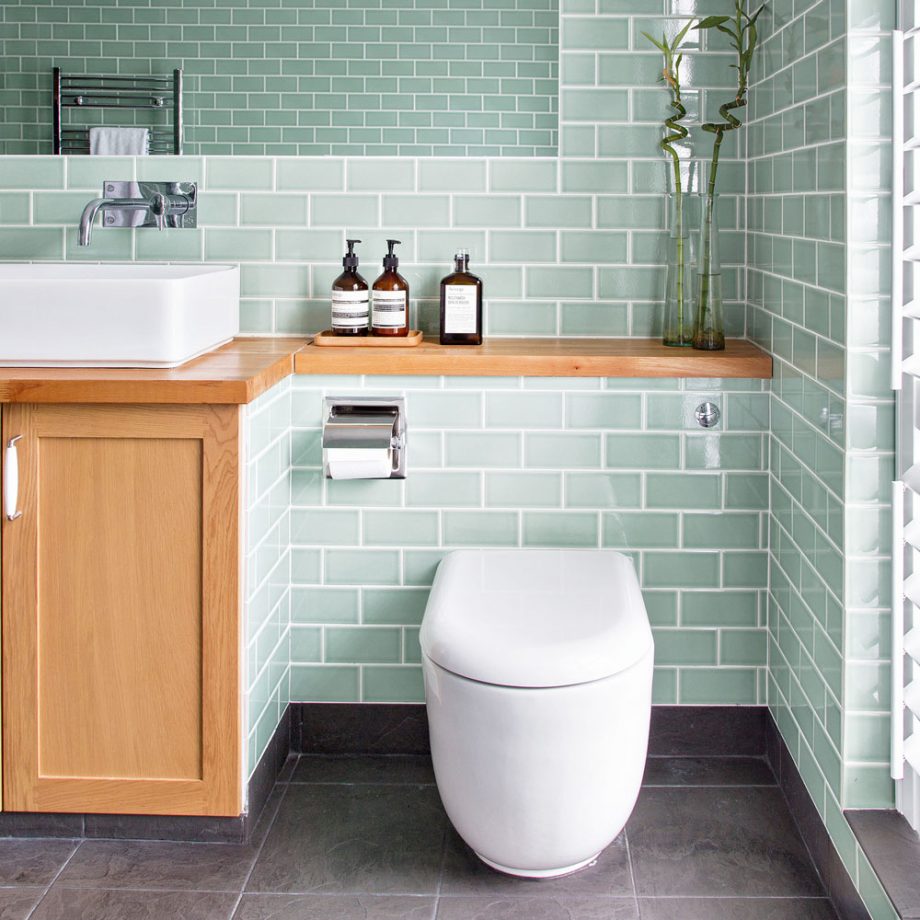Tips on how to unclog your toilet like a pro
At one point in your life you’re going to face a clogged toilet. There’s some technique to fixing it, so when you have a clog, don’t freak out, grabbing any plunger so you can jab away like a madman into the toilet bowl.
Stop the toilet bowl from filling up
“Open up the lid and close the flapper. The flapper releases water from the tank and into the bowl”. Joe tells us that the flapper valve is the blue cap/shield thing in the image below
Get the right plunger
“People always use the wrong plunger” says Joe. We found out that the right plunger to use is a flange plunger. Regular sink plungers don’t work as well.
Warm up the plunger
“Hard plungers don’t work as well either. Warm up the rubber by putting it under hot water” says. Apparently, this will soften up the rubber which will help you get a better seal on the toilet.
Plunge!
Stick the plunger into the bowl. “Make sure you and get a strong seal around the hole. Then push down and pull up” he says. He adds that you shouldn’t just focus your strength on the push down. The pull up is equally as important. Give a few solid strokes then flush the toilet

Here’s How to Figure Out Why Your Toilet Keeps Clogging
When your toilet keeps clogging, you need to know what’s behind this common issue to prevent it ongoing. If your toilet keeps clogging, likely causes include the fixture itself, your plumbing system, and what you send down the drain. There are certain issues that are correctable on your own, though others require the help of a skilled plumber.
Reasons Why a Toilet Keeps Clogging
Continuous toilet clogs are a problem no area homeowner wants to deal with, time and time again. Some sources of this issue have to do with how you use your toilet. Others concern the fixture or your plumbing system. Learn the common causes why a toilet keeps clogging and how to stop recurring toilet clogs below.
Common causes of a toilet that keeps clogging include:
Too much TP
Flushing things that shouldn’t be flushed
Older toilet models
Toilet trap clogs
Toilet vent blockages
Sewer line clogs
Your Toilet Keeps Clogging Due to Too Much TP!
Toilet tissue is made to be flushed, but when you use too much, your toilet drain cannot handle this much waste! Excessive toilet paper use leads to a situation where the toilet keeps clogging. A small amount of toilet paper easily dissolves in water, but larger amounts do not dissolve quickly enough and become trapped in the toilet drain or sewer line.
That Which Should Not Be Flushed
Toilet paper and bodily waste are the only things that belong down the toilet drain. Non-flushable materials that continually make their way into the drain are one reason your toilet keeps clogging. Because they are not meant to be handled by the toilet, they easily become trapped in the lines to form clogs.

How to unblock a toilet – the quickest and easiest way
Step-by-step guide to unblocking a toilet
How to unblock a toilet – that dreaded phrase you type into a search engine every few months. Sorry you had to find this page. We feel your pain. It might be the dirtiest, smelliest and most unglamorous bathroom job ever, but it’s really easy to do once you know how.
Gather your equipment before going into battle
You will need:
A plunger – ideally ball-shaped
Rubber gloves
Old newspaper to cover the floor around the toilet
Bleach/drain unblocker/caustic soda
An opened window/fan
Don’t be tempted to keep trying the flush
If you try it once and it doesn’t flush properly, it’s blocked and no further flushing is going to help you out. If you know there’s something stuck in your toilet (a child’s toy, a bottle of something that’s fallen in, you know the drill), reach for your gloves and pull it out. Although, if it’s something a bit, well, smellier, then it’s time to flex your plunger muscles.
Locate the blockage
Lift the drain cover to see if the chamber is full of water. If so, the blockage is further along the soil pipe. If the chamber is empty, the blockage is in the soil pipe between the loo and the chamber, or in the pan. You can try and clear any blockages in the pipes by using specialist drain rods or makeshift devices, such as a wire clothes hanger. Failing that, a drain company is the answer.
Use the plunger firmly against the blockage
Use a plunger that is shaped to seal the opening in the toilet bowl to create the correct vaccum and pressure needed, and also to prevent mess. An auger is a flexible rod that reaches far into the toilet controlled by a crank handle. Once the blockage is located, the auger will pull or push the item to remove it. Try the flush again and watch the beautiful sight of a flushed toilet before your very eyes.

Unclogging a Toilet Without a Plunger
Few things are more frustrating than a clogged toilet. Typically, you just plunge a toilet to clear the clog. However, what do you do when there is no plunger nearby? Perhaps you are in a new home and have not yet bought a plunger.
Whatever the case may be, you need to know how to clear a toilet if you do not have access to a plunger. The following are some tried-and-true methods for unclogging a toilet without a plunger.
Use Near-Boiling Water
One way of unclogging a toilet is using extremely hot water that is not quite boiling yet. You do not want to use boiling water because the excessive heat can crack your toilet bowl, which could lead to an even bigger problem.
To unclog a toilet with hot water, simply fill a large bucket with very hot tap water. If your tap water does not get hot, you can heat a pot of water on the stovetop until just before the boiling point. Pour the water into the toilet bowl until the bowl is almost full, and allow the water to sit for as long as possible.
Use Dish Soap
If the hot water method does not work, consider adding dish soap to your toilet bowl. Add about a cup of dish soap and allow the soap to sit for several minutes. Make sure to use a dish soap designed to break down grease.

Ways to Unclog Your Toilet
Nothing says “panic” quite like a clogged toilet. You flush the toilet—the water starts rising and you’re left with mess and an expensive repair bill. In most cases, you can clear a toilet clog with a few tools and a little bit of elbow grease. However, not all toilet clogs are the same. Your toilet could be clogged for many reasons, including:
Using too much toilet paper
Flushing non-flushable toiletries
Dropping toys or other small items in the drain
Plunger
Whenever you hear the word clog, your mind probably goes straight to the plunger. If you’re imagining a plunger with a red rubber cup and a long wooden handle, you’re going to have a tough time breaking up the clog. Cup plungers, also known as sink plungers, are used to clear clogs in sinks and other straight drains. To successfully unclog a toilet drain with minimal effort, you need to use a flange plunger. These plungers have an extra rubber ridge at the bottom of the plunger cup that slides into the toilet drain. This creates a better seal and more suction.
Toilet Snake or Closet Auger
Small, hand-powered drain snakes are relatively affordable and available at most local hardware stores. A toilet snake works by breaking up the clog into smaller pieces, so it can pass through the drain.
Dish Soap and Hot Water
A combination of dish soap and hot water can help lubricate and break down clogs caused by excess toilet paper use. This trick can also come in handy if you don’t have any toilet unclogging tools close by.
Baking Soda and Vinegar
Like the dish soap and hot water method of clearing a toilet clog, a concoction of baking soda and vinegar can make your toilet functional again. If you remember building a model volcano in elementary school, combining baking soda and vinegar creates a fizzy, foamy reaction. Unlike corrosive drain chemicals, baking soda and vinegar are completely safe to use and won’t damage your plumbing. A word of caution: if your toilet is close to overflowing, this method could leave you with a big mess to clean up.